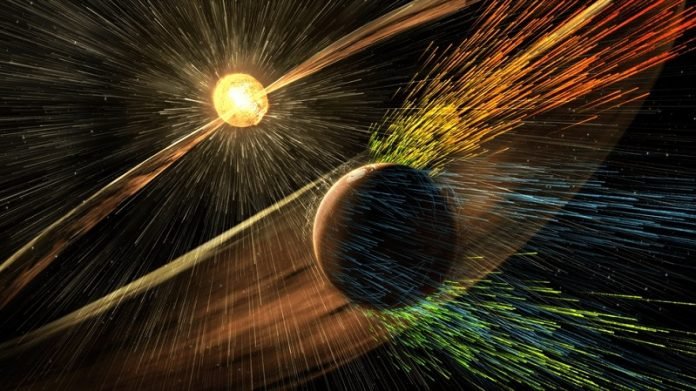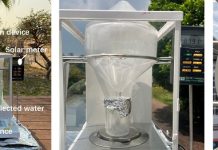
The planet Mars is calling to us.
At least, that is the impression one gets when examining all the planned and proposed missions to the Red Planet in the coming decade.
With so many space agencies currently sending missions there to characterize its environment, atmosphere, and geological history, it seems likely that crewed missions are right around the corner.
In fact, both NASA and China have made it clear that they intend to send missions to Mars by the early 2030s that will culminate in the creation of surface habitats.
To ensure astronaut health and safety, both in transit and on the surface of Mars, scientists are investigated several means of radiation protection.
In a recent study, a team from the Blue Marble Space Institute of Science (BMSIS) studied how various materials could be used to fashion radiation-protective structures.
This included materials brought from Earth and those that can be harvested directly from the Martian environment.
This is in keeping with the In-Situ-Resource-Utilization (ISRU) process, where local resources are leveraged to meet the needs of the astronaut crews and the mission.
The research was led by Dionysios Gakis, a visiting scholar at BMSIS and a physics graduate of the University of Patras, Greece.
He was joined by Dr. Dimitra Atri, a Senior Research Investigator at BMISIS, a physics professor with the Center for Space Science at New York University Abu Dhabi, and Gakis’ academic advisor. The paper that describes their findings (“Modeling the effectiveness of radiation shielding materials for astronaut protection on Mars“) is being considered for publication by Acta Astronautica.
The Martian radiation environment is significantly more dangerous than Earth’s due to its thin atmosphere and lack of a planetary magnetic field.
On Earth, people in developed nations are exposed to an average of 0.62 rads (6.2 mSv) per year, whereas the surface of Mars receives about 24.45 rads (244.5 mSv) per year — and even more when solar events (aka. solar flares) occur. As Dr. Atri told Universe Today via email, this radiation comes in several forms:
“Galactic Cosmic Rays consist of charged particles which are a billion (or more) times more energetic than visible light.
They can penetrate through shielding and cause irreparable damage to the human body. Additionally, solar storms can sometimes accelerate charged particles to very high energies (Solar Energetic Particles), which can cause comparable damage.
The amount of radiation coming from cosmic rays is highly predictable whereas solar storms are very hard to predict.”
For their study, Gakis and Dr. Atri investigated the properties of various shielding materials that could be transported to Mars or harvested in situ.
These consisted of materials common in the aerospace industry – like aluminum, polyethylene, cyclohexane, polymethyl methacrylate, Mylar, and Kevlar – and water, carbon fiber liquid hydrogen, and Martian regolith.
As Gakis explained, they assessed each of these materials using the GEANT4 numerical model – a software suite that simulates the passage of particles through matter using statistical Monte Carlo methods.
“We built a computational model of Mars and measured the cosmic energy deposition inside a hypothetical human phantom, representing an astronaut,” he said.
“A shield of material was set to absorb some part of the radiation before reaching the astronaut. The most effective materials, in terms of radiation protection, were the ones which let the least energy passing in the astronaut’s body.”
Their results indicated that hydrogen-rich materials (i.e., water ice) have a predictable response to GCRs and are therefore the best defense against cosmic rays. They further found that regolith has an intermediate response and could therefore be used for additional shielding – especially when combined with aluminum. Said Gakis:
“For example, although aluminum was not found to be as effective as other materials, it can still be helpful in reducing radiation doses, and we advocate combining it with other materials. Martian regolith has similar behavior and the advantage of being an in-situ material, not requiring us to carry it from Earth.”
NASA and other space agencies are assessing several designs, materials, and technologies that will allow for the creation of habitats on the Moon, Mars, and beyond. In particular, NASA and the Chinese National Space Agency (CNSA) are planning for crewed missions to Mars in the next decade, which will launch every 26 months (starting in 2033) and culminate in the creation of habitats on the surface. According to Gakis and Dr. Atri’s analysis, these habitats will likely consist of an interior structure fashioned using lightweight materials transported at low cost from Earth.
In the case of aluminum and carbon fiber, they could be produced in-situ using aluminum mined from Martian rock and carbon harvested from its atmosphere.
These could then be shielded using locally-harvested water ice and regolith, which robots will 3-D print to create a protective superstructure. Such habitats will enable long-duration missions far beyond Earth and could even be a stepping stone to permanent human settlements in space.
“Radiation is one of the many issues humankind must address in order to successfully accomplish the human [exploration of] the Red Planet,” Gakis summarized.
“We believe that our research is another step in understanding the devastating effects of cosmic rays in the Martian environment and planning effective mitigating strategies for future crewed missions to Mars.”
Written by Matt Williams.



